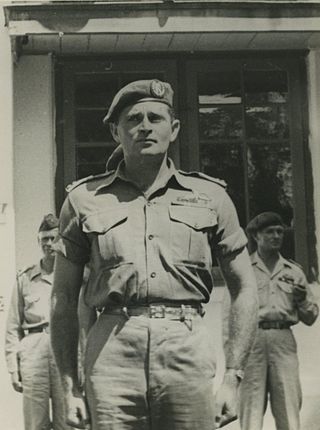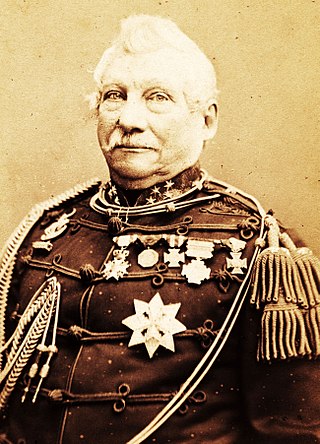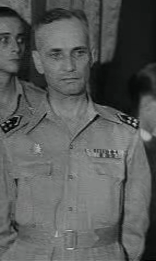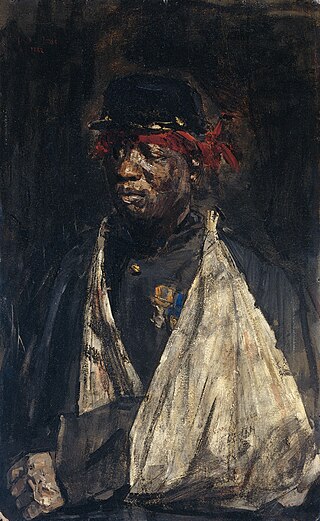Military decorations
-
 Knight of the Order of the Netherlands Lion
Knight of the Order of the Netherlands Lion -
 Expedition Cross with clasps: "Honorable Mention", "Aceh 1876-96"
Expedition Cross with clasps: "Honorable Mention", "Aceh 1876-96" -
 Aceh Medal 1873–1874
Aceh Medal 1873–1874 -
 Medal for Long, Honest and Faithful Service with the figure XXXV
Medal for Long, Honest and Faithful Service with the figure XXXV
Johan Cornelis van der Wijck | |
|---|---|
| Born | January 11, 1848 Buitenzorg, West Java |
| Died | October 2, 1919 (aged 71) The Hague, South Holland |
| Allegiance | Royal Dutch East Indies Army |
| Service | Infantry |
| Years of service | 1865–1907 |
| Rank | Lieutenant general |
| Commands | Governor of Aceh Royal Dutch East Indies Army |
| Aceh War | First Aceh Expedition |
Jhr. Johan Cornelis van der Wijck (11 January 1848, in Buitenzorg – 2 October 1919, in The Hague) was a Dutch lieutenant general of the Royal Netherlands East Indies Army (KNIL) and governor of Aceh and related territories.
Van der Wijk was educated at Koninklijke Militaire Academie and in 1869 he was promoted to second lieutenant. In 1874 he was promoted to first lieutenant and became commander of the IIIrd military department. Van der Wijck became captain in 1888, major in 1892 and lieutenant colonel in 1894. In 1895 and 1898 he was military commander of Palembang and in 1880 he became commander of the infantry in Magelang. In 1898 he was promoted to colonel and in 1900 as major general he became commander first of the first and then of the second military department on Java. Then he became chief of the weapon of the infantry as well as chief of the second department of the Dutch war ministry in the Dutch East Indies.
After Van der Wijck temporarily became head of the KNIL in 1903 he was thanked by the government for the quality of his command. In 1904, during the absence of the civil and military governor of Aceh, Van Heutsz, Van der Wijck temporarily assumed his responsibilities. A year later he was honorarily discharged from the function. In 1905 he became lieutenant general, commander of the army and head of the Department of War in the Dutch East Indies. In the same year he became a member of the central committee of the Dutch East Indies Red Cross.
At his own request, Van der Wijck was honorably discharged from the army in 1907 and was thanked for his services to the country. He became a Knight of the Order of the Dutch Lion and received the Aceh Medal for his military achievements in the Kraton during the Aceh War. He also received the Expedition Cross. He was honorably mentioned for his military actions in the XII and XXVI Mukims in Aceh in 1879. He died on 2 October 1919 and was buried at the Algemene Begraafplaats (General Cemetery) in The Hague.

Henri Gerard Winkelman was a Dutch military officer who served as Commander-in-chief of the Armed forces of the Netherlands during the German invasion of the Netherlands.

The Military William Order, or often named Military Order of William, is the oldest and highest honour of the Kingdom of the Netherlands. It is named after St. William of Gellone (755–814), the first Prince of Orange. Its motto is Voor Moed, Beleid en Trouw. The chivalric order was established on 30 April 1815 by King William I and was presented for feats of excellent bravery on the battlefield and as a meritorious decoration to senior military officers. Comparable with the French Légion d’Honneur but far less often awarded, it is open to everyone regardless of rank or nobility—not only to Dutch military, but also to foreigners. To date, membership in the Order is extremely rarely awarded, and only for exceptional bravery in battle.

Hein ter Poorten was a Dutch military officer. He was the commander of the Royal Netherlands East Indies Army in World War II. Ter Poorten was also Allied land forces commander in the American-British-Dutch-Australian Command on Java during early 1942.

Lieutenant General Gerardus Johannes Berenschot was Commander-in-Chief of the Koninklijk Nederlands Indisch Leger. An Indo – as Eurasians of Indonesian and Dutch descent – Berenschot was the son of a Dutch officer in the KNIL.

The Royal Netherlands East Indies Army was the military force maintained by the Kingdom of the Netherlands in its colony of the Dutch East Indies, in areas that are now part of Indonesia. The KNIL's air arm was the Royal Netherlands East Indies Army Air Force. Elements of the Royal Netherlands Navy and Government Navy were also stationed in the Netherlands East Indies.

Joannes Benedictus "Jo" van Heutsz was a Dutch military officer who was appointed governor general of the Dutch East Indies in 1904, years after he had become famous for bringing to an end to the long Aceh War.

Raymond Pierre Paul Westerling was a Dutch military officer of the Royal Netherlands East Indies Army. He orchestrated a counter-guerrilla operation in Sulawesi during the Indonesian National Revolution after World War II and participated in a coup attempt against the Government of Indonesia in January 1950, a month after the official transfer of sovereignty. Both actions were denounced as war crimes by the Indonesian authorities. Born in the Ottoman Empire, despite his nickname, The Turk, Westerling was of mixed Dutch and Greek descent.

General Simon Hendrik Spoor was the Chief of Staff of the Royal Netherlands East Indies Army and the Royal Dutch Army in the Dutch East Indies, from 1946 to 1949, during the Indonesian National Revolution.

Alexander Willem Frederik Idenburg was a Dutch military officer and politician of the Anti-Revolutionary Party who served as Governor-General of Suriname from 1905 until 1908, and the Dutch East Indies from 1909 until 1916. He also served as Minister of Colonies on three occasions between 1902 and 1919. Idenburg served on the Council of State from 1925 until his death in 1935.

'Theodoor Johan Arnold van Zijll de Jong was a Dutch Lieutenant General and commander of the Royal Netherlands East Indies Army

Gotfried Coenraad Ernst "Frits" van Daalen was a Dutch military officer of the Royal Dutch East Indies Army who served as the Governor of Aceh from 1905 until 1908. During the Aceh War, van Daalen and his men were responsible for the Kuta Reh massacre, in which hundreds of men, women, and children were killed.

The Netherlands Indies Civil Administration was a semi-military organisation, established in April 1944, tasked with the restoration of civil administration and law of Dutch colonial rule after the capitulation of the Japanese occupational forces in the Dutch East Indies at the end of World War II.
Van Wijk is a Dutch toponymic surname. "Wijk" may refer to Wijk bij Duurstede or a number of other towns, including Wijk near Leusden, Beverwijk, Rijswijk, Waalwijk, and Wijk aan Zee. 12,750 people in the Netherlands carried the name in 2007. Alternative forms are van Wijck, van der Wijk, van Wyk, and van Wyck. Notable people with the surname include:

The Korps Marechaussee te voet were a colonial gendarmerie of the Royal Netherlands East Indies Army (KNIL), principally used for counter-insurgency in the Dutch East Indies.

Johannes (Jan) van Swieten was a Dutch General and politician.

Major-general Ludolph Hendrik van Oyen was the Chief of Staff of the Royal Netherlands East Indies Army from 1942 to 1946, during World War II.

Major general Dirk Reinhard Adelbert van Langen was a member of the chief of staff of the Royal Netherlands East Indies Army (KNIL), the territorial commander of East Java, and commander of the T-Brigade of the Royal Netherlands Army from 1946 to 1949, during the Indonesian National Revolution.

Carl Heinrich Wilhelm Anthing was a German officer, in Dutch service under several successive regimes, starting with the Dutch Republic, and followed by the Batavian Republic, the Kingdom of Holland, and the First French Empire, to end up in the United Kingdom of the Netherlands, where he led the Indies Brigade, both at Waterloo, and finally to the Dutch East Indies, where it would be the core of the future Royal Netherlands East Indies Army.

Jonkheer Carel Herman Aart van der Wijck was Governor-General of the Dutch East Indies in 1893–1899.

Portrait of a Wounded KNIL Soldier is an Amsterdam impressionist portrait painting by Isaac Israëls, signed and dated to 1882. It has been in the Rijksmuseum since 2000.